 Fear of pain has long been inherent in any living creature. This protective reflex not only does not fade during the course of a lifetime, but also increases with the immediate threat of pain.
Fear of pain has long been inherent in any living creature. This protective reflex not only does not fade during the course of a lifetime, but also increases with the immediate threat of pain.
Visit to the dentist - a wonderful provocation dentofobii. As the statistics indicate, ninety-two percent of respondents associate with the word dentist exactly memories of the pains caused in the dental office.
Anesthesia in dentistry is a topical issue, but total local anesthesia has long been perceived as the only panacea that relieves a person from pain in dental treatment.
Nevertheless, in practice dentists increasingly began to apply sedation, displacing anesthesia and anesthesia.
Contents
- What's in a name for you my. ..
- Advantages and limitations of
- Application
- In pregnancy, other
options What's in a name for you. ..
Sedation is calledthe use of medications to calm the patient's psyche. In dental practice, one of the types of sedation is applied - superficial or deep.
The choice of volume depends on the individual characteristics of the patient, his mental stability, as well as the treatment that the patient will perform.
Deep sedation leads to depression and causes drowsiness in the patient. In this state, he is not able to respond to the words of doctors, often can not breathe evenly. To achieve complete relaxation, the patient is additionally injected with a local anesthetic.
Deep sedation is most similar to anesthesia, because it has the same drawbacks as anesthesia. 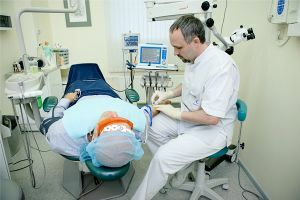
Most often, doctors apply a superficial sedation, in which the patient is conscious, able to respond to the doctor's words and fulfill his requests, control his breathing.
The only drawback - partial memories of manipulation in the dental chair. With superficial sedation, as with deep sedation, the introduction of local anesthetics is necessary.
Advantages and limitations of use
Dental treatment under sedation has several advantages.
- Firstly, patients do not experience panic before treatment and doctor's fear, inclined over them. Conducting manipulations in the oral cavity is not blocked by patients.
- Secondly, anesthesia is carried out without the use of drugs , which means that it can be performed by most patients.
- Thirdly, this kind of anesthesia allows you to conduct several stages of diverse treatment at once .
- And lastly, this method of anesthesia blocks the gag reflex and nausea , which often appear during medical manipulations.
Do not recommend sedation to patients who are afraid of a person wearing a white coat - in this case, the panic will not be preserved until the 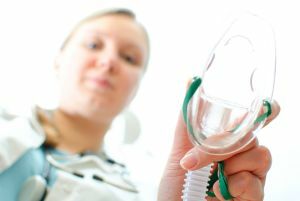 procedure itself, rather than before the image of the doctor conducting it.
procedure itself, rather than before the image of the doctor conducting it.
Also do not recommend sedation patients who calmly withstand discomfort during a visit to the dentist, and can do without additional anesthesia.
Do not use such a tool to make it easier for the doctor. Indeed, the dentist is much easier to work with such a patient, but this does not mean that the patient needs a similar procedure. In this case, comfort issues for medical personnel are not considered.
Varieties of the solution
Depending on how sedation will be performed, they distinguish between inhalation, oral and intravenous:
- The inhalation uses nitrous oxide, which is inhaled through a mask for inhalation. It is not always comfortable for a doctor who performs manipulations in the oral cavity. In addition, it is quite difficult to regulate the depth of sedation with nitrous oxide,
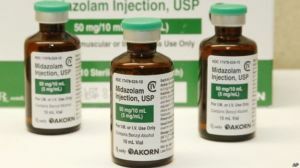 is much more effective in working with intravenous drugs.
is much more effective in working with intravenous drugs. - Intravenous is manufactured by the following medications - Midazopam, Prophopol or Thiopental sodium. The effect of these drugs is much higher than those that are administered orally or by inhalation. But there are drawbacks to this method of anesthesia - the need for venous puncture and local complications.
With the above mentioned drawbacks, practicing dentists do not refuse sedation, but on the contrary - recommend it to those who have strong fear, are afraid of any treatment, even the most insignificant, if there is a long unpleasant procedure.
Sensations of the patient
Unpleasant sensations in the dentist's office persecute each patient to some extent. The level of these sensations depends on the type of the nervous system of the patient.
For example, people who lead an active lifestyle and experience frequent stresses have a lowered pain threshold. This means that their nervous system is extremely excitable and excess stress only provokes tension. For these patients, sedation is the best solution.
The patient wakes up slowly after the procedure, but feels as if he had just been awakened.
In the first seconds, he does not necessarily understand where he is and what happened to him. Within two hours after the procedure, the patient will be in a special room, where he departs from anesthesia.
In the zone of attention - babies
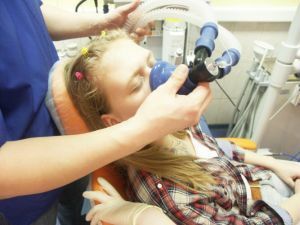 The use of sedation in the treatment of children is especially important, because kids rarely go to contact with a doctor, they are often afraid of dental treatment.
The use of sedation in the treatment of children is especially important, because kids rarely go to contact with a doctor, they are often afraid of dental treatment.
Children as a sedation method choose inhalation, which uses nitrous oxide through a mask. Within a few seconds the small patient relaxes and follows the doctor's instructions. After the end of the manipulation, the gas leaves quickly enough, and the patients themselves unobstructed regain consciousness.
It should be noted that children are very positive about the process, because the mask with gas has a pleasant sweetish-fruity smell, and the kids do not mind using a new object for them - a mask.
During sedation, children are absolutely calm, can breathe normally and retain all natural reflexes. Only in some cases children can not take nitrous oxide through a mask, for example, with adenoids.
For children sedation carries a lot of positive points. Parents can be sure that the kid absolutely does not feel the pain, the noise of the gun, he will not see the medical instruments. Dullness and tactile sensations are also dulled. In addition, several teeth can be treated simultaneously.
Sedation: not anesthesia, not anesthesia
Speaking of sedation, it is worth noting that it is not a prototype of anesthesia or anesthesia.
This is an independent type of anesthesia, which is based on the oppression of pain centers. If anesthesia involves exposure to a certain nerve zone, and anesthesia completely "turns off" the body, sedation is something between these types of anesthesia.
In addition, with the introduction of anesthesia, the patient is suppressed protective reflexes, which makes it difficult to carry out manipulations. For example, if breathing is disturbed, the doctor has to take breaks, and even stop the treatment of teeth altogether.
With sedation, these problems do not disturb the dentist, and he can work comfortably in the area of the affected tooth for forty minutes or even more. This is especially true for children who are afraid of doctors and can not sit in a chair for a long time.
This is not an analogue of anesthesia, but its modern substitute, allowing to communicate with the patient and at the same time not to hurt him.
When Pregnancy - Options Other
Doctors do not recommend sedation to pregnant women. Despite the fact that the preparations for administration have excellent recommendations for use, they are not used in the treatment of pregnant women. As a rule, dental treatment is postponed to a later date, when the baby is already born.
If the situation is urgent, a related method of NUCALM analgesia is used, with which the patient's 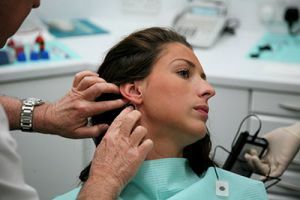 is exposed to bioactive additives, weak currents and relaxing music.
is exposed to bioactive additives, weak currents and relaxing music.
The use of new methods of anesthesia, such as sedation, is an excellent opportunity for the patient to feel protected from pain from the dentist.
The use of this method of anesthesia is justified for most dental manipulations, and its good tolerability extends the range of patients who can take advantage of this unique opportunity and cure their teeth without pain.
